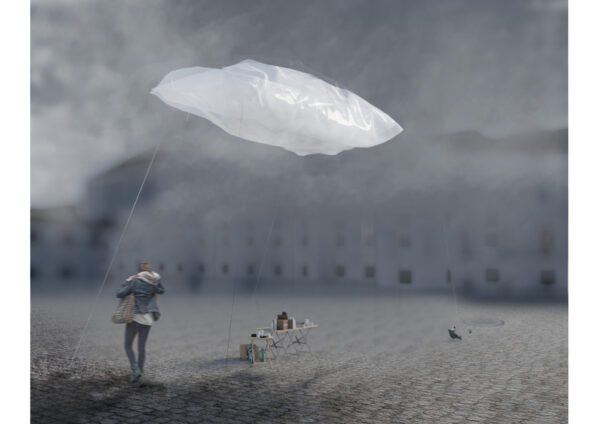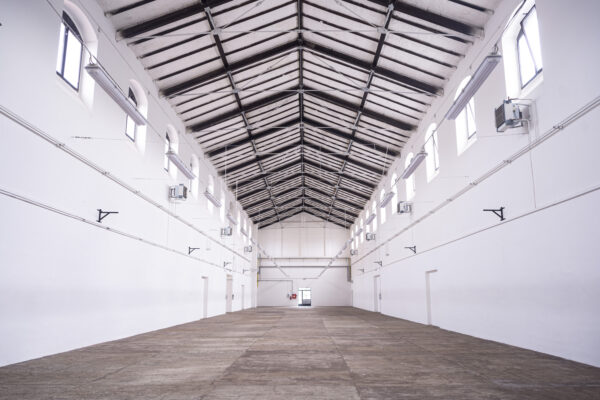
Credits
- Author of the Exhibition:
Ksenia Makała
Exhibition Supervisor: Marek Chowaniec
Curatorial Team: Marek Chowaniec, Jarosław Cymerman, Krystyna Mogilnicka, Anna Rudek-Śmiechowska - Producer of the object: LUXPOL
Producer: Zbigniew Raszewski Theatre Institute
Project Production: Karolina Dziełak-Żakowska, Krystyna Mogilnicka - The work "Asylum" was awarded with Responsivness to Urgences award of International Jury for the 15th edition of Prague Quadrennial in the category of Student Exhibition.
Making of
Exhibition description
After the outbreak of the full-scale aggression against Ukraine, new awareness of threats and lack of control became dominant aspects also in Poles’ lives.
The ASYLUM project is an attempt to create a safe space: the roof functions as a shelter which spreads over pedestrians, it provides shade, protects against rain, and interacts with external weather conditions. It can change with the wind, and gain transparency by catching the sun’s rays. It also forms a contrasting and unexpected shape within the existing architectural environment.
Eating meals together, either in a hurry or with time to spare, is a part of the reality for people coming from Ukraine to temporary places of stay in Poland.
Photos
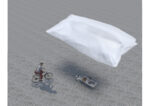
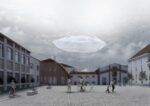

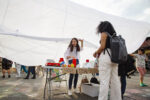
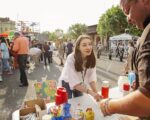

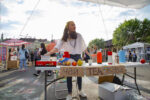
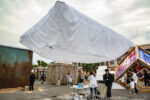
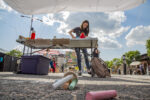
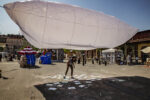
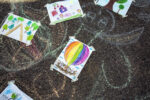
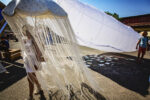
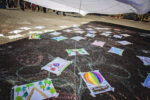
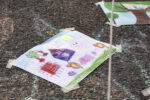
Biographical information
Ksenia Makała
student of the Academy of Fine Arts in Katowice, graduate of the Faculty of Architecture of the Silesian University of Technology. Ksenia creates the projects in the field of architecture, interior design, scenography and interdisciplinary activities. She is interested in space and relations within it, as well as the impact of urban agglomerations on an individual and their well-being. She is the author of the winning realization in the Competition for an art object in the Polish-German Gardens in Warsaw and a finalist of the aWAKen International Scenic Design Competition.
Teaser
Community and educational activities around the exhibition
Community and educational activities held around the exhibition may be divided into several stages. All were aimed at strengthening the exhibition’s primary metaphor: the asylum.
The student exhibition, Asylum, focused on the history of Poland in the immediate aftermath of Russia’s full-scale invasion of Ukraine, and the social situation of women and children affected by the migration crisis, which resonated with Poles who felt a grass-root need to help and set up various, sometimes makeshift stalls offering hot tea or coffee, and organised activities to keep children entertained. The story we told through the set design installation concerned not only migrant adults and minors but also children who witnessed the shifting social fabric in the first days, weeks and months after the outbreak of war. It is therefore necessary to listen to them and ask them what ‘asylum’ means to them.
The exhibition author invited children aged 5-10 to make drawings on the topic of “Asylum/Shelter”. The children’s works became part of the exhibition and were displayed to the public or reproduced on the pavement in front of the balloon. The participants of the pilot workshop were classes of children from Kindergarten no. 433 in Warsaw and the 1st Marshal of Poland Józef Piłsudski Primary School in Warsaw. The artist wrote a letter to the children in which she said: “Every day, we live in homes. We feel safe there because we know our homes well. What would happen if we found ourselves in a completely different place on Earth or lost our way home? Imagine meeting a person/character or an animal who cannot return to their home. Your task is building a temporary shelter, an asylum, where they feel safe.
Are there materials you like and would like to use to build the asylum? (fabrics, e.g. soft fur or plants – leaves or hay). What form would the asylum have (e.g., round or polygonal)? Would it float in the air, be hidden underground, or drift on the water? What colour and size would it be? Would it be a large object or a shelter for an ant that could fit in a pocket?
Draw a ‘shelter’ for an imaginary person/character/animal.
More questions that can be helpful: What does shelter mean to you? What materials can it be made from? Are there objects that could be used to house a hiding place? When do you feel safe? What can you do to help someone ‘feel at home’? What things help us feel secure? Do you know any characters (in books or films) who had to run away from dangerous characters or situations [the introduction to the topic of the war in Ukraine, telling the children about it.]
A movement & art workshop entitled “Asylum” was also held for children aged 4–12 and their caregivers. The workshop programme was developed by Ksenia Makała, the author of the exhibition created for the Prague Quadrennial 2023 and Anna Wańtuch, a choreographer and expert on movement work with families.
When working on her award-winning exhibition Asylum, Ksenia sought to answer how objects and things affect the human body. A colossal balloon levitating in the air behaved very unpredictably in the wind. It caused delight and surprise and provoked amusement and attention. It could also scare someone because it was huge. During the workshop, the group built their shelters, experimenting with how the size of their bodies and the temperament of their personalities helped or hindered the shape of the shelter. How do you move to take care of your object that protects you? How do you take care of the object and how does the object take care of you?
As part of the presentation in Katowice at the Silesian Museum during Museum Night on 18 May 2024, all viewers were asked to finish the sentence “My asylum is…”. The answers were used to create an interpretation map on the museum wall.
Workshops at the Theater Institute. Zbigniew Raszewski - November 19, 2023
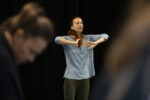
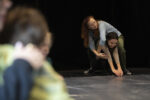
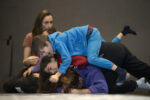
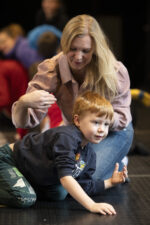
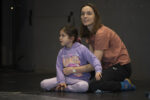
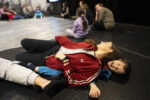
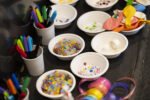
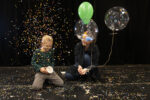
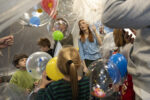
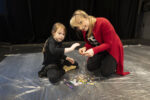
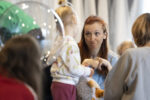
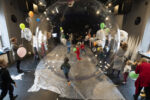
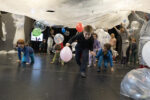
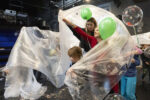
Workshops at the Silesian Museum as part of the Night of Museums - May 18, 2024
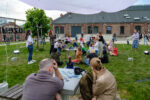
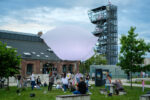
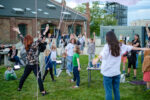
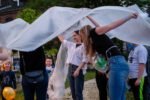
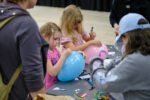

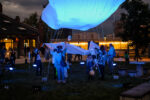
 Asylum
Asylum 